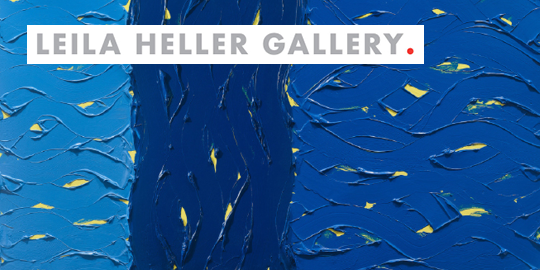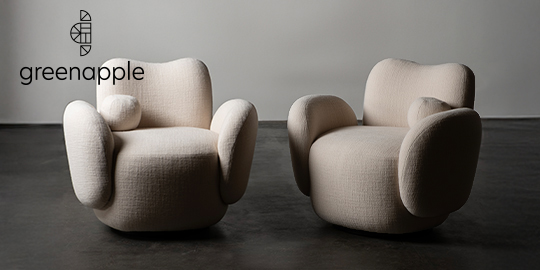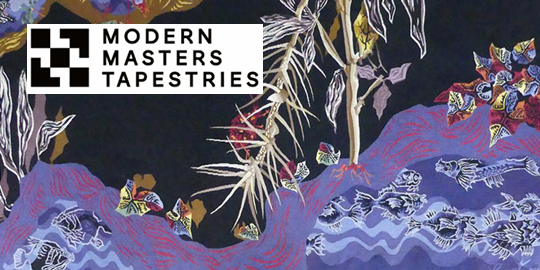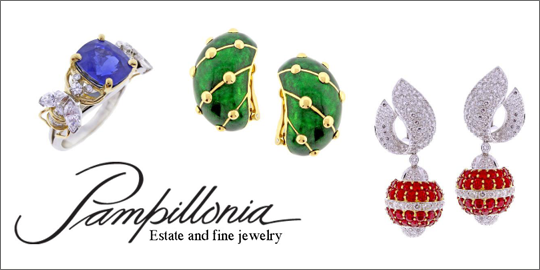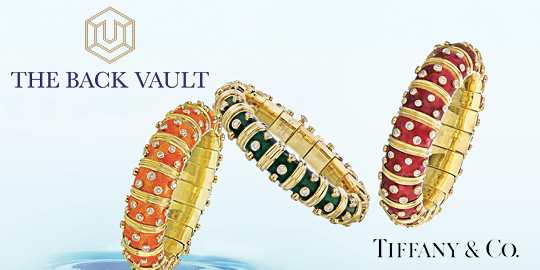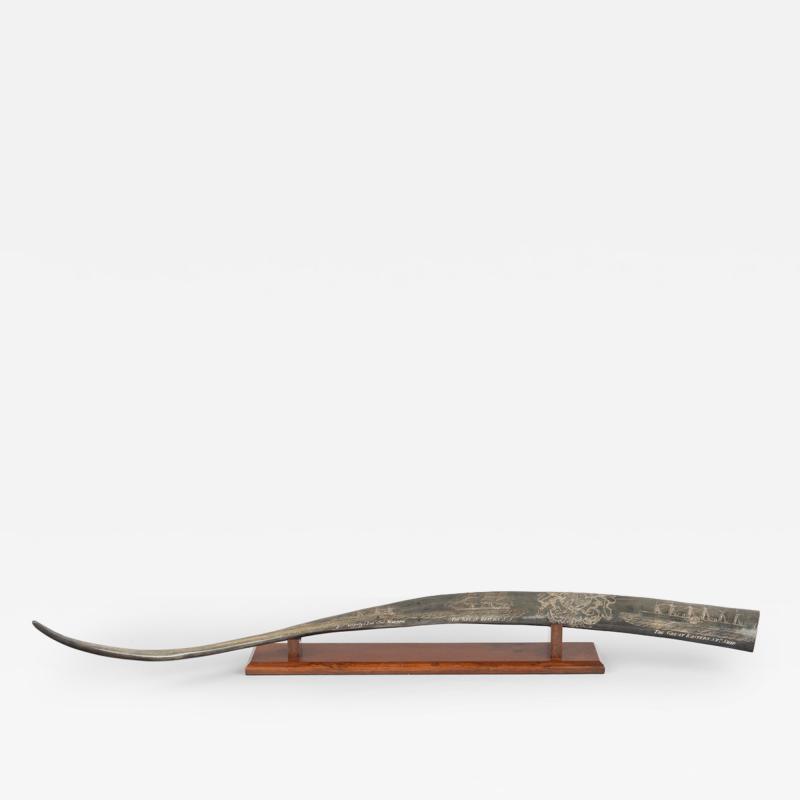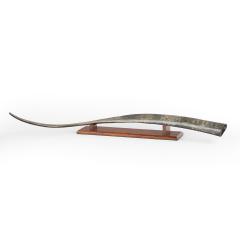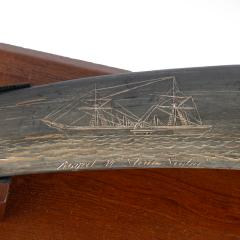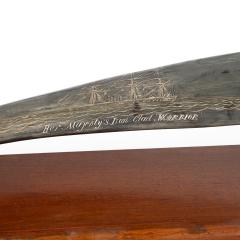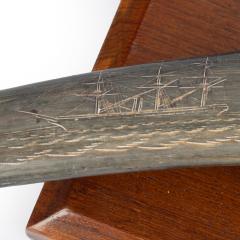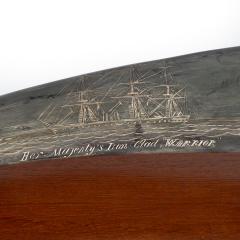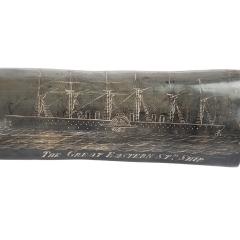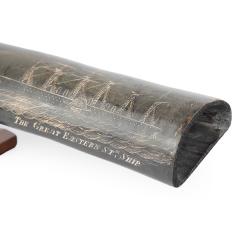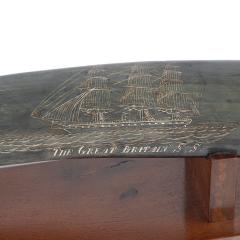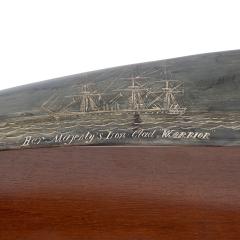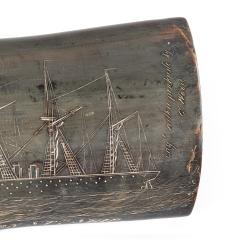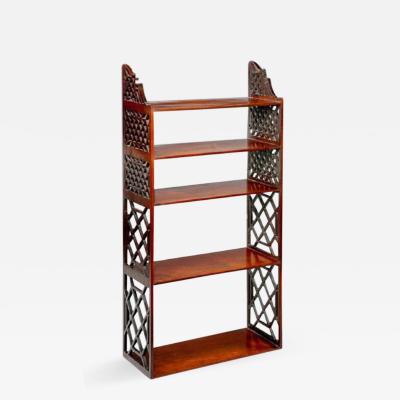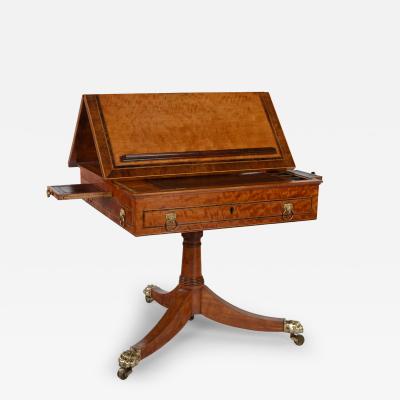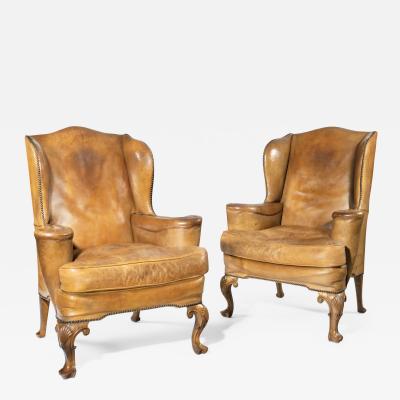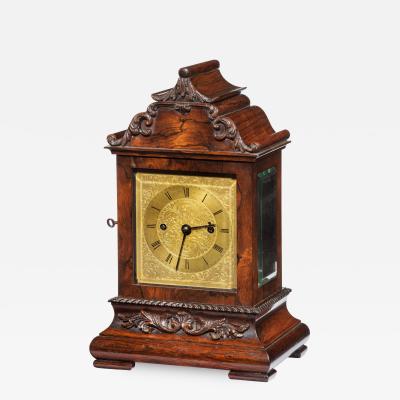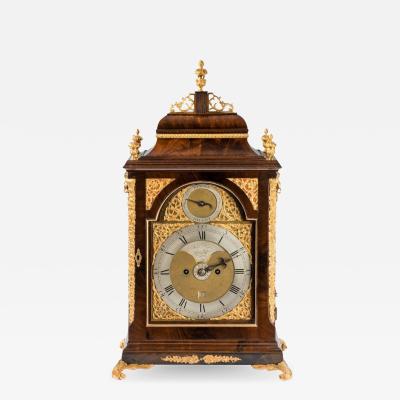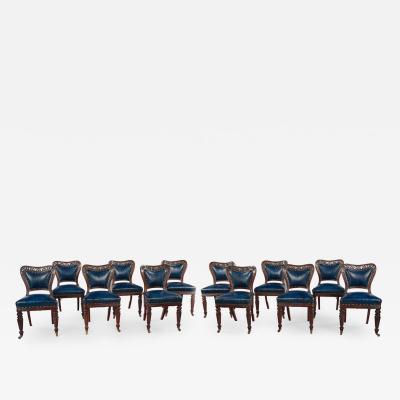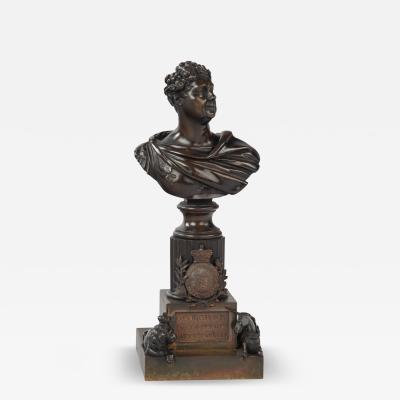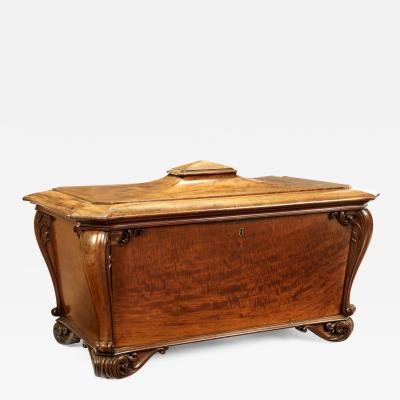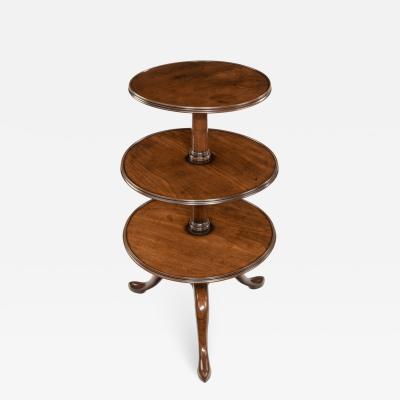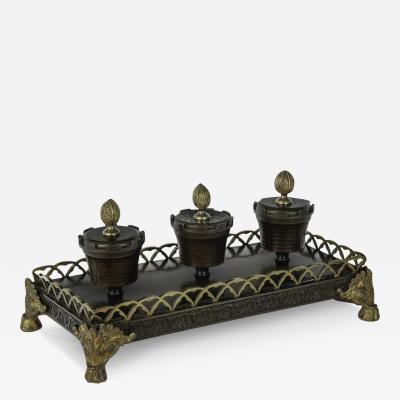A rare scrimshaw decorated horn Signed and inscribed by the base by C. Wood
-
Description
A rare scrimshaw decorated horn, engraved over one side with the Royal Arms countersigned and titled ship profiles for the Great Eastern, the Great Britain, H.M.S. Warrior, a royal steam yacht and four others. Signed and inscribed by the base, Engd. With a penknife by C. Wood. English, c 1860.
Footnote:
Little is known about the mysterious C. H. Wood but it has now been established by good reasonable doubt that he was born Charles H. Wood and, according to new sources we have discovered, he was a Liverpool man and at one point worked for a Mr Winsland, builder in London. He was English by birth but enjoyed a truly international career, seemingly working in both America and Australia and exhibiting his exceptional productions on board ships and at ports. In her article Advance Australia: C. H. Wood, Embellisher-of-Sea-Shells, Ox-Horn and Whale-Ivory, published in Australiana, November 1992, Susan M. Frank describes Wood’s career as an engraver beginning as follows:
‘In June 1845, on the occasion of the maiden transatlantic voyage of Isambard Kingdom Brunel’s revolutionary steamship Great Britain, an obscure English engraver named C. H. Wood produced a elaborate presentation piece expertly incised in the manner of whalemen’s scrimshaw on the voluminous inner surface of a large seashell. Featuring portraits of the Great Britain and Great Western (another of Brunel’s ocean-going leviathans, launched in 1837), the shell was dedicated to Queen Victoria and consort Prince Albert, to whom Wood presented it as a gift. Whether or not this presentation was ever actually acknowledged at Windsor Castle, it marks the debut of Wood’s progression of royal patronage into a thriving scrimshaw business. His entire subsequent career and reputation in the English press were inextricably linked to the fame and ill-starred fortunes of Brunel’s controversial ships.’
Later in the article, Frank refers to Wood’s engraved and signed nautilus and conch pieces:
‘In the same period when he was making shellwork souvenirs Wood was evidently also engaged in engraving bovine horn, but none have survived. He and his tenuous royal connections continued. Most of it was with the English Royal Family and most of it was conducted from 1845 until 1857. Each new development in the English Royal Family was signalled by engraved shells, complete with commemorative inscriptions and poems, one signed by the engraver C. H. Wood, horn embellisher to HHRH Fred and HHRH Prince Consort (sic). It seems unlikely that he ever ventured further than the Yankee whale fishery and on this or some other occasion may have visited Australia.’
The two engraved horns now on collection, one signed and one not, add further to this small corpus of surviving pieces. Wood is believed to have exhibited his carved shells at the Great Exhibition in 1851 and the International Exhibition of 1862. A nautilus shell engraved with a view of the Great Eastern steamship is in the collection of the Yale Center for British Art.
https://collections.britishart.yale.edu/catalog/orbis:10166587
another is in the SS Great Britain Museum
https://www.ssgreatbritain.org/collection-stories/engraved-nautilus-shell-1845/
and a conch shell engraved to commemorate the death of Prince Albert is in the British Museum
https://www.britishmuseum.org/collection/object/H_2007-8040-1
Susan M. Frank also contributed an article on Wood to the Dictionary of Scrimshaw Artists, published in 1991.
Research in the British Newspaper Archive has allowed us to shed further light on Wood’s career and work. The first reference we discovered is in Carlisle Patriot, dated the 24th of January 1845. Wood is described as
‘an artisan in the employ of Mr Winsland, builder, London’ and the article relates the story of his presenting a shell to the King and Queen.
On the 25th of April 1849, Wood found himself in front of a judge having been accused of stealing two pairs of children’s shoes when drunk. The case was dismissed but not before an account of Wood’s talent was given to the court. An account in the London Evening Standard, on the 26th of April reveals that Wood’s engraved shell, mentioned in Frank’s article, was indeed accepted by the Royal family and that ‘a sum in gold was presented to him in return by his Sovereign’. He later received a package from the Queen including a framed proof engraving of the coronation by Hayter. Another article on this same court case was published in John Bull on the 30th of April 1849. There is further material of interest in this piece as it describes the fact that Wood made his way to sell two of his engraved shells to a lady who had agreed to purchase them before he got drunk. Additionally, the article states that Wood’s lawyer told the court that Wood had
‘gained great celebrity for his power of engraving on shells. Although a painter, he had taught himself to engrave in the most beautiful manner on shells’.
This is the only reference located so far that refers to Wood’s profession and, as such, is extremely interesting.
Perhaps more fascinating still is an article published in the Liverpool Daily Post on the 26th of October 1861. It reads:
‘Mr C. H. Wood, the celebrated shell engraver connected with the Great Eastern, in accordance of his usual custom of bestowing an engraved shell on the mayor of whatever port the ship may enter, intends in a day or two to present one of his wonderful specimens to our worthy chief magistrate’
These newspaper accounts do suggest that the reason that Wood’s pieces survive is that they were almost always treasured presentation pieces and not tourist souvenirs as has been thought to be the case until now. A further newspaper account, published long after Wood’s death in the Huddersfield and Holmfirth Examiner on the 21st of November 1964 sheds further light on Wood and his activities. The article illustrates two career nautilus shells which had passed down through the family of a Mrs Crowther to her granddaughter Mrs Byram.
‘Apparently the Crowthers became very friendly with the captain on their journey (aboard the Great Eastern) and he gave them the shells to remind them of the Great Eastern.
Obviously the captain C. H. Wood (was like many sailors) good with his hands, and the shells are beautifully inscribed.’
If the article is to be believed then it would seem that Mr Wood was captain of the Great Eastern. However a list of the captains on the ship does not include Wood’s name so this seems likely to have been a mistake made by the journalist at the time.
An article published in the Ulverston Mirror and Furness Reflector on the 6th of September 1862 quotes from another article published in the “Preston paper”. It records Wood presenting an engraved shell to the Mayor of Preston that same year as well as a sculptured bullova egg which he gave to the Mayoress. There are three details in this article which are of particular interest. The first is that Wood is described as ‘Mr C. H. Wood of Liverpool, sculptor and engraver on shells’, seemingly establishing a little more about the life of this fascinating man. Secondly the article ends by mentioning that Wood whilst connected with the Great Eastern made similar presents to the mayors of London, Southampton, Cork, Liverpool &c., suggesting that Wood was no longer connected to the ship at this stage. Finally, the description of the shell presented to the Mayor of Preston includes ‘a beautifully engraved figure, representing Peace, seated on the prow of a vessel, and pointing to the victory achieved by the great English hero Nelson’. This demonstrates that Wood had used Nelson as a subject and strengthens the attribution of our unsigned piece to the master.
In addition to the range of shells engraved by Wood discussed above, there is also one other carved horn which is attributed to Wood and is known as The Horn of Australia due to its iconography relating to that country. It is in the collection of the Kendall Whaling Museum in the US but is now on loan to the Australian National Maritime Museum, Sydney. -
More Information
Origin: England Period: 19th Century Materials: Horn, Wood Condition: Good. Creation Date: C 1860 Styles / Movements: Traditional Incollect Reference #: 830222 -
Dimensions
W. 43.5 in; W. 110.49 cm;
Message from Seller:
Wick Antiques, established by Charles Wallrock in the early 1980s, specializes in fine antiques with a reputation built on extensive knowledge and long-standing relationships, including with Harrods. Contact Charles at 44.159.067.7558 or via email at charles@wickantiques.co.uk for exceptional pieces curated by a team with expertise in Islamic, Japanese, and fine works of art.


